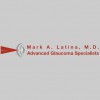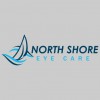
It is our goal to provide a lifetime of good vision to you, your family and friends in a professional and caring environment. Glaucoma affects three million Americans today and is the second leading cause of blindness. For over 29 years we have provided expertise in the diagnosis and management of Glaucoma, Cataracts, Corneal Disorders and General Ophthalmology, for both children and adults.
Dr. Latina and his team of highly trained and skilled clinicians utilize state-of-the-art diagnostic tools and the latest technology to provide patients with comprehensive eye care. A renown laser expert, Dr. Latina pioneered several laser procedures and is the inventor of the Selective Laser Trabeculoplasty that has transformed the treatment of Glaucoma worldwide.
Dr. Latina is an internationally renowned glaucoma specialist and laser expert in a professional and caring environment. Dr. Veerasammy's optometric interests include fitting specialty contact lenses and co-management for surgical procedures.
Dr. Latina and his team of highly trained and skilled clinicians utilize state-of-the-art diagnostic tools and the latest technology to provide patients with comprehensive eye care. A renown laser expert, Dr. Latina pioneered several laser procedures and is the inventor of the Selective Laser Trabeculoplasty that has transformed the treatment of Glaucoma worldwide.
Dr. Latina is an internationally renowned glaucoma specialist and laser expert in a professional and caring environment. Dr. Veerasammy's optometric interests include fitting specialty contact lenses and co-management for surgical procedures.
Services
Robert O. Kwon, M.D. specializes in a variety of ophthalmological surgical specialties in including cataract surgery, refractive surgery, corneal surgery, anterior segment surgery, plastic surgery and other retina specialty work.
He is a graduate of the prestigious Northwestern University and followed with a residency at the University of Missouri in Kansas City and a fellowship with Dr. Francis Price, a world renowned surgeon in Indianapolis, Indiana.
He is board certified in ophthalmology and a member of numerous prestigious national eye health associations.
He is a graduate of the prestigious Northwestern University and followed with a residency at the University of Missouri in Kansas City and a fellowship with Dr. Francis Price, a world renowned surgeon in Indianapolis, Indiana.
He is board certified in ophthalmology and a member of numerous prestigious national eye health associations.
Dr. Nolan specializes in Cataract, Glaucoma and Laser Eye Surgery having completed a glaucoma fellowship with Mark Latina, M.D.
He completed his residency in Ophthalmology at Boston University Medical Center and medical degree at Tufts University School of Medicine.
Dr. Nolan performs surgery at Massachusetts Eye & Ear Infirmary and North Shore Cataract and Laser Center.
He is on staff at Massachusetts Eye and Ear Infirmary, Winchester Hospital, Lahey Hospital, Hallmark Health and Holy Family Hospital.
He completed his residency in Ophthalmology at Boston University Medical Center and medical degree at Tufts University School of Medicine.
Dr. Nolan performs surgery at Massachusetts Eye & Ear Infirmary and North Shore Cataract and Laser Center.
He is on staff at Massachusetts Eye and Ear Infirmary, Winchester Hospital, Lahey Hospital, Hallmark Health and Holy Family Hospital.
The leading cause of blindness for people over 60, Age-Related Macular Degeneration, also called AMD is a disease that gradually destroys sharp, central vision.
Central vision is needed for seeing objects clearly and for common daily tasks such as reading and driving.
As the disease advances, one may need brighter light for reading, experience blurriness or see blank or dark spots in vision.
Causing no pain, AMD affects the macula, the part of the eye that allows you to see fine detail.
In some cases, AMD advances so slowly that people notice little change in their vision.
Central vision is needed for seeing objects clearly and for common daily tasks such as reading and driving.
As the disease advances, one may need brighter light for reading, experience blurriness or see blank or dark spots in vision.
Causing no pain, AMD affects the macula, the part of the eye that allows you to see fine detail.
In some cases, AMD advances so slowly that people notice little change in their vision.
Visual evoked potential (VEP) directly measures the electrical activity in the vision system.
When light from an image enters our eye, it is converted into electricity at the retina and travels through the optic nerve and other pathways to the part of our brain that processes vision, the visual cortex.
We will be measuring the strength of the signal reaching your visual cortex and how fast it gets there.
The VEP technology in the Diopsys NOVA device helps us determine how your eyes communicate with your brain in a way that no other instrument or vision test can.
When light from an image enters our eye, it is converted into electricity at the retina and travels through the optic nerve and other pathways to the part of our brain that processes vision, the visual cortex.
We will be measuring the strength of the signal reaching your visual cortex and how fast it gets there.
The VEP technology in the Diopsys NOVA device helps us determine how your eyes communicate with your brain in a way that no other instrument or vision test can.
More than 140 million people in the United States wear eyeglasses.
Eyeglasses improve vision by adjusting the way the eyes bend and focus light.
Ideally, light rays are refracted, or bent, as they pass through the cornea so that they focus on the retina in the back of the eye.
In a healthy eye, this means that objects can be seen clearly.
Most people have corneas that have a shallow or steep curvature which causes light rays to focus in front of or behind the retina.
Objects may then appear blurry at certain distances or at all distances.
Eyeglasses improve vision by adjusting the way the eyes bend and focus light.
Ideally, light rays are refracted, or bent, as they pass through the cornea so that they focus on the retina in the back of the eye.
In a healthy eye, this means that objects can be seen clearly.
Most people have corneas that have a shallow or steep curvature which causes light rays to focus in front of or behind the retina.
Objects may then appear blurry at certain distances or at all distances.
Reviews

Be the first to review Advanced Glaucoma Specialists.
Write a Review

